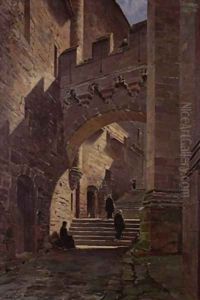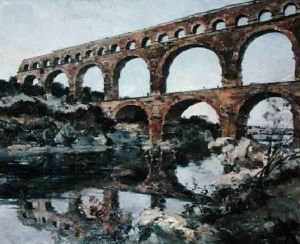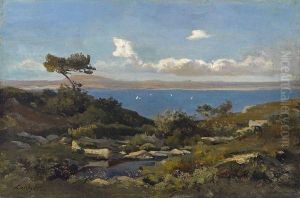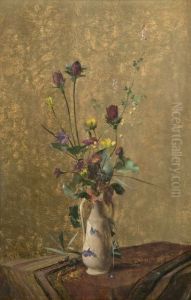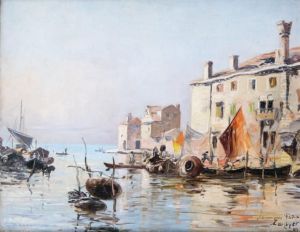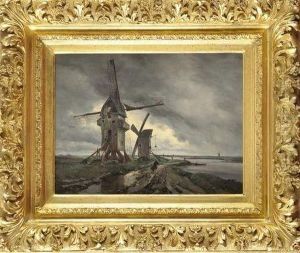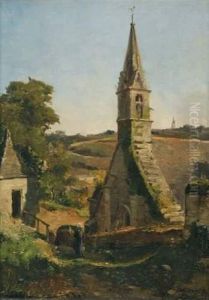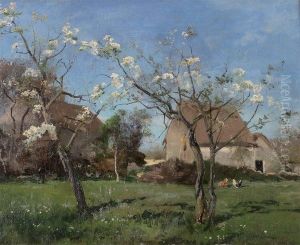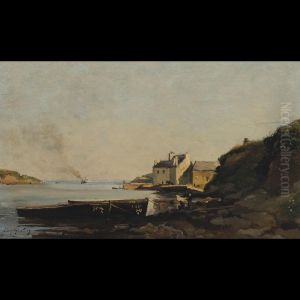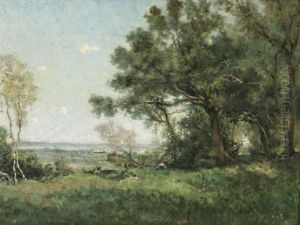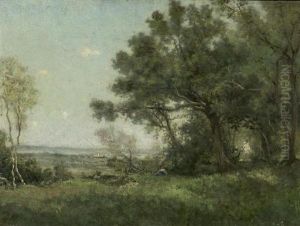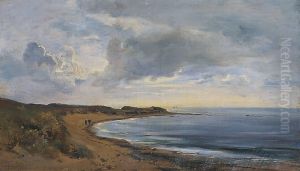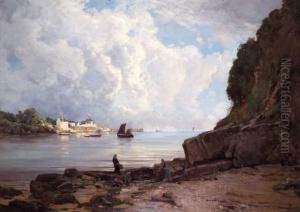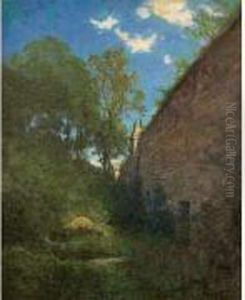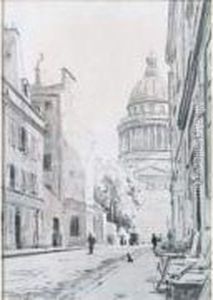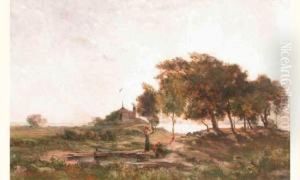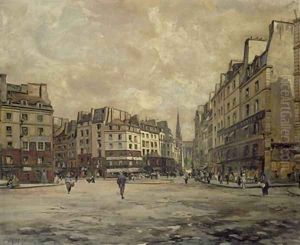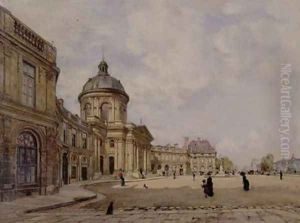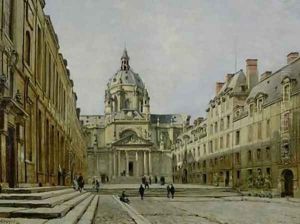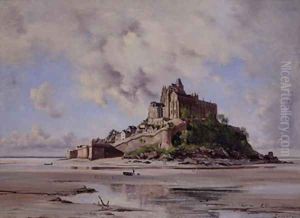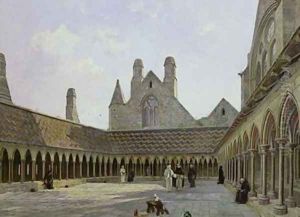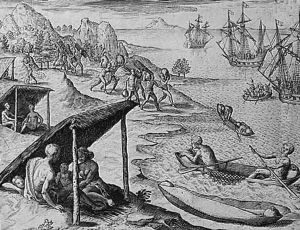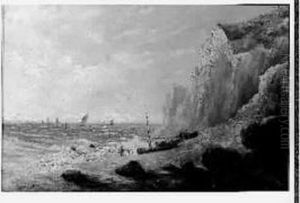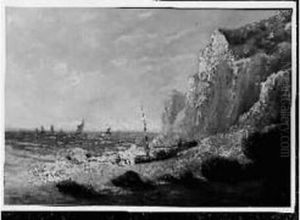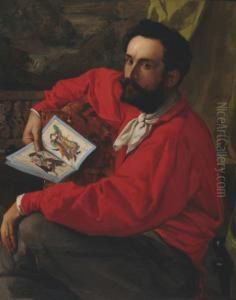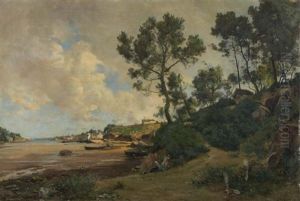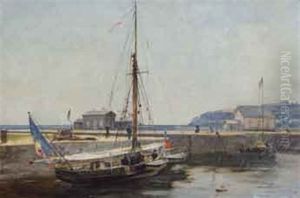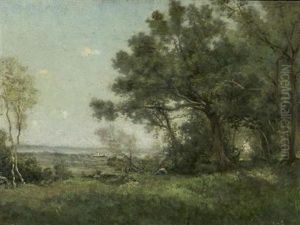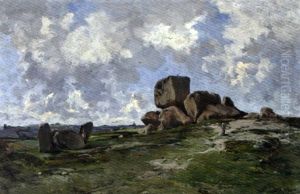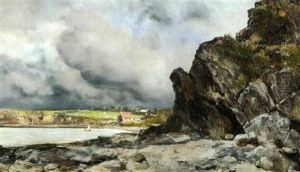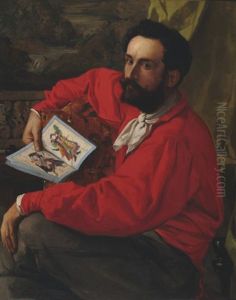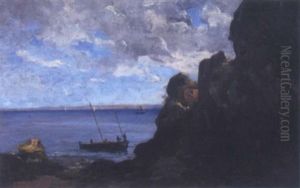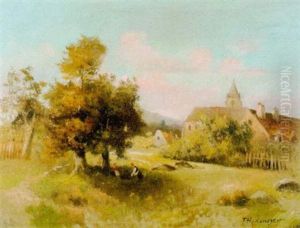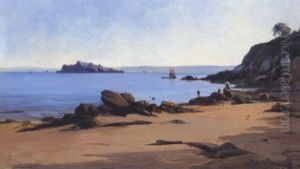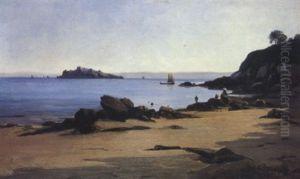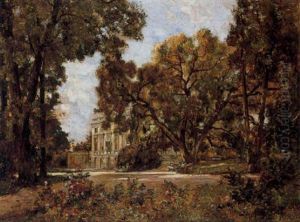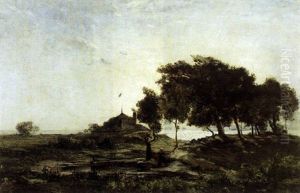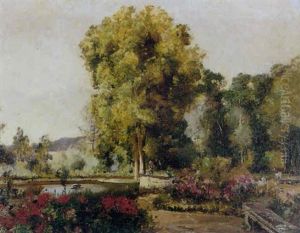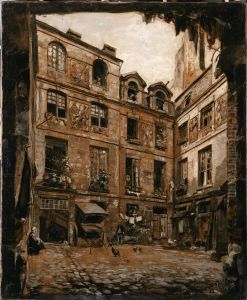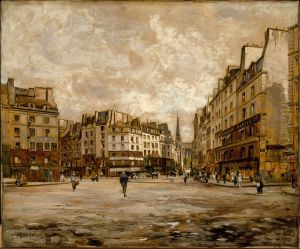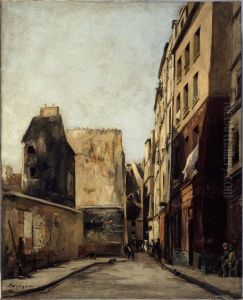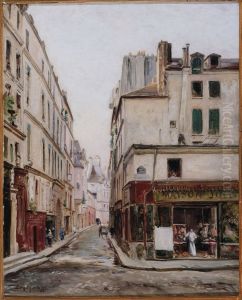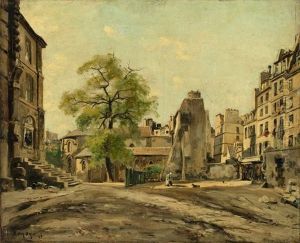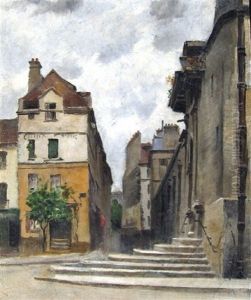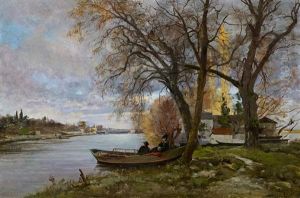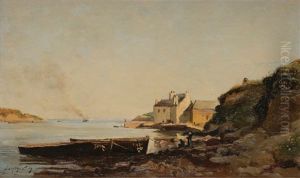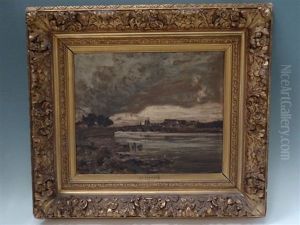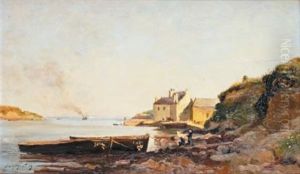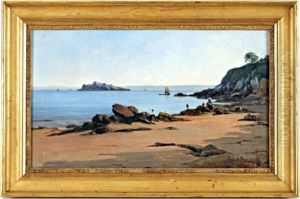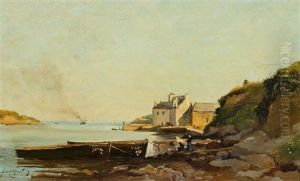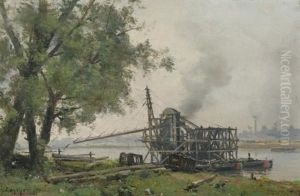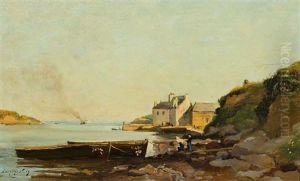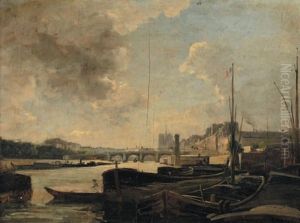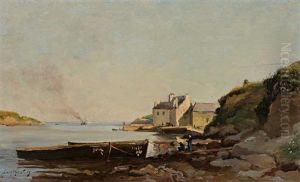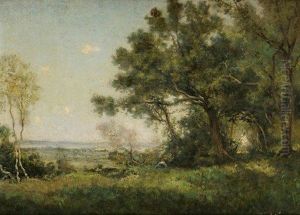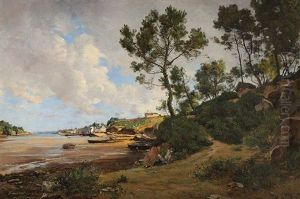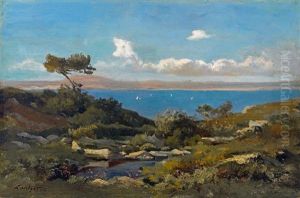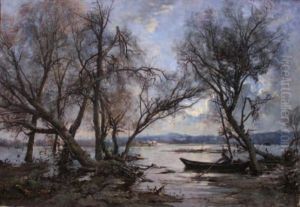Emmanuel Lansyer Paintings
Emmanuel Lansyer was a French landscape painter, born on February 24, 1835, in Honfleur, France. He was known for his detailed and realistic depictions of the French countryside and architecture. Lansyer initially trained as an architect under the guidance of Léon Vaudoyer, who was a prominent figure in the field. However, Lansyer's passion for art prevailed, and he shifted his focus to painting, studying under the tutelage of renowned artists such as Jean-Baptiste-Camille Corot and Charles-François Daubigny, who were key figures in the Barbizon school of painting.
As a painter, Lansyer was deeply influenced by the Barbizon movement, which emphasized painting en plein air (outdoor painting) and focused on the truthful representation of nature. He often painted his immediate surroundings, capturing the essence of the landscapes and urban scenes of his time with precision and attention to detail. Lansyer exhibited his works regularly at the Paris Salon, the official art exhibition of the Académie des Beaux-Arts in Paris, and received several awards for his paintings, including a gold medal in 1873.
Lansyer's dedication to his craft was evident in his meticulous approach to capturing light and atmosphere in his landscapes. His works often showcased a range of textures and a subtle use of color, reflecting his architectural background and his keen observation skills. Lansyer traveled extensively throughout France, drawing inspiration from various regions, including the Loire Valley, Brittany, and Normandy.
Apart from his painting career, Lansyer was also a collector of Japanese art, which influenced some of his compositions and choice of subjects. He amassed a significant collection of Japanese prints, which were later donated to the museum in his hometown of Honfleur.
After a prolific career, Emmanuel Lansyer passed away on January 15, 1893. His legacy continues through his art, which is displayed in several museums across France, including the Musée d'Orsay and the Musée Emmanuel Lansyer in his birthplace, Honfleur. The latter is a museum dedicated to his life and works, housed in the artist's former residence, which he bequeathed to the town upon his death along with his Japanese art collection and personal belongings. Lansyer's work remains an important part of French art history, representing the transitional period between the Barbizon school and Impressionism.
